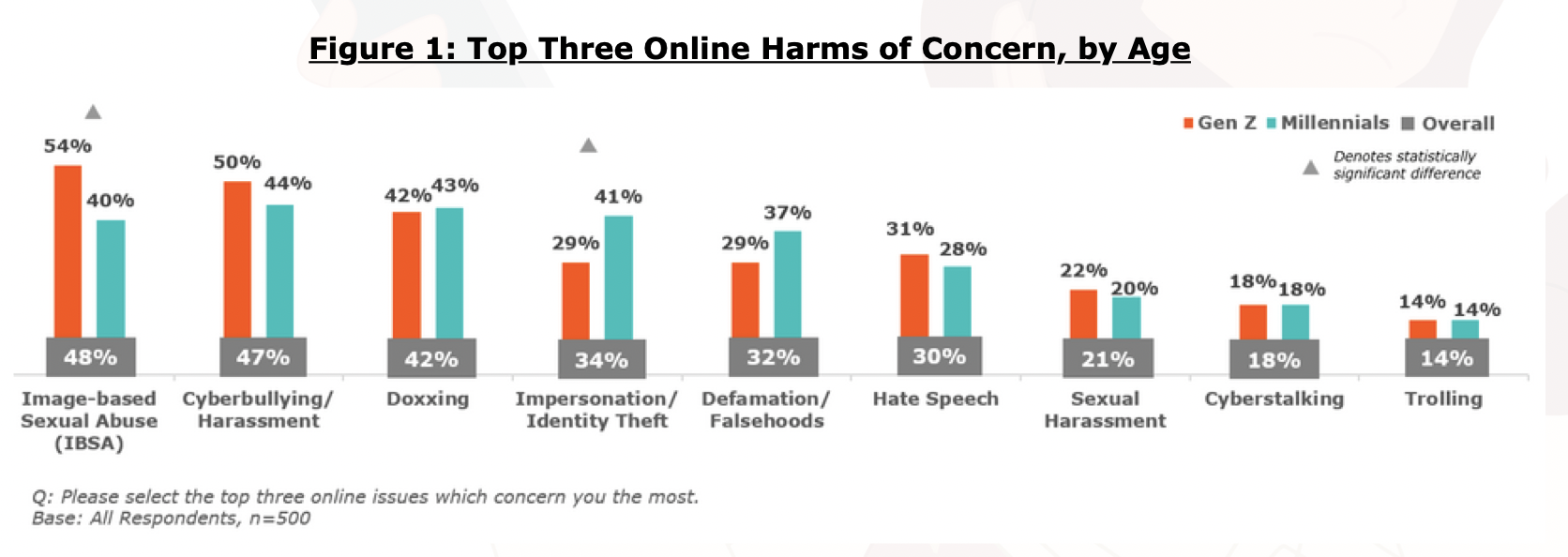Six in 10 Singapore youths reported being exposed to sensitive content on social media without searching for it, according to a recent study by non-profit organisation SG Her Empowerment (SHE).
The Safeguarding Online Spaces (SOS) Study was conducted through surveys and focus group discussions with over 500 youth respondents.
Its findings were discussed in a virtual panel on Feb. 8.
How often do youths get recommended sensitive content?
The study found that 63 per cent of youth polled reported being recommended some form of unsolicited sensitive content.
The majority of the respondents reported being upset after viewing the content, of which about half reported feeling that way for at least a few hours.
The most common type was body image-related content, which was experienced by 31 per cent of affected youths.
Body image-related content also affected female respondents (37 per cent of the time) more often than male ones (24 per cent).
 Image from SHE report.
Image from SHE report.
This underscores the vulnerability of female youths using such platforms, noted panellist Calissa Man, a representative from the Global Shapers Community.
Man shared views that she heard from many female focus group participants — that the constant exposure to unrealistic body standards on social media posts worsened their self-esteem.
And in some cases, resulted in body dysmorphia or eating disorders.
Meanwhile, male youths (24 per cent) reported more unwarranted exposure to adult nudity and sexual content than female youths (17 per cent).
Male focus group participants shared how such content encouraged them to view women as sexual objects, the study noted.
Youths also reported frequently seeing unsolicited content relating to unhealthy eating and exercise behaviour, as well as dangerous dares and challenges.
Other aspects of online safety
So what were youths' top concerns when it comes to online safety?
According to the study, youth were most concerned about violations of dignity and privacy, such as image-based sexual abuse (IBSA), cyberbullying or harassment, and doxxing.
 Image from SHE report.
Image from SHE report.
Youths also raised concerns about the negative effects of generative Artificial Intelligence (AI) -- with female youths more likely than male youths to feel this way.
For instance, many female focus group respondents were concerned that their images and photos would be abused, altered and circulated online without their consent, Man noted.
Others were worried about the impact of AI-altered or generated images on body image norms.
"What worries me is how generative AI seems to always lean towards a sexualised image when a woman or girl is the subject. The more I see AI-generated imagery, the more I feel we're being pushed into a box of unrealistic and sexualised portrayals,” one female respondent shared.
What can we do about it?
The three panellists also discussed solutions to improve online safety for youths.
Priyanka Bhalla, Safety Policy Manager at Meta, highlighted some of the tools developed to protect vulnerable youths on social media platforms.
These include privacy controls, age verification technology and detection software for deepfakes and sensitive content, she noted.
She added that it's an ongoing process that involves feedback from stakeholders, as well as improving education on online safety for parents and young people.
Eric Chua, Senior Parliamentary Secretary for the Ministry of Culture, Community and Youth (MCCY) and the Ministry of Social and Family Development (MSF) said that apart from legislation and government policies, the "social component of our defence" should also be strengthened.
Chua encouraged parents to make their homes safe spaces where they could have conversations about cyber hygiene and mental health with their children.
He also pointed out the importance of networks of peers and neighbours in looking out for vulnerable youths.
Lastly, Man shared that youths themselves can be involved in these efforts.
For instance, they can play their part by being responsible social media users themselves and also flag up harmful content on social media when they come across it.
They can also play a role in public education, by getting trained as youth ambassadors who can lead discussions on online safety, she added.
Online safety a policy concern
Online safety for youths and children has been a major policy concern in the past few years.
An amendment to the Online Safety Bill was passed in November 2022, requiring designated social media platforms in Singapore to implement more safeguards for children.
Earlier in January 2024, 13 recommendations to build a safer digital space -- including better detection of deepfakes, and protection against cyberbullying and online harms -- were discussed in Parliament.
The motion was passed after a seven-hour debate.
Top image from Unsplash.

If you like what you read, follow us on Facebook, Instagram, Twitter and Telegram to get the latest updates.



